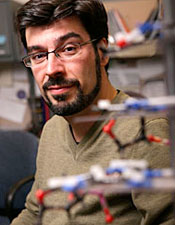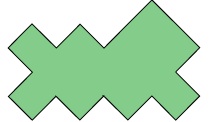
High school students in San Diego are finding more uses for their math formulas. They’re creating art for display in the community.
Read this story from the San Diego Union-Tribune.

High school students in San Diego are finding more uses for their math formulas. They’re creating art for display in the community.
Read this story from the San Diego Union-Tribune.

Here’s one more example of how researchers are using science to track (and understand) athletic performance.

This article from Scientific American presents three puzzles by Martin Gardner, a respected mathematician who died recently. Give ’em a try.
Vladimir Arnold, one of the most important mathematicians of the 20th century, died Thursday in France. Among many awards and recognitions Arnold received in his professional career, he was presented the Crafoord Prize in 1982 and in 2001, the World Prize in Mathematics.
He is also known as the coauthor of the KAM theorum of classical mechanics, for which the ‘A’ in KAM is his initial. The theorem deals with mechanical trajectories.
In his later years, he worked at the Steklov Mathematical Institute in Moscow and the Moscow State University. Arnold was 72 years old.
It seems that in my school that the only way Math is taught is by the cut & dry approach of this how you do it. I often ask teachers how they could engage students in real world applications of the math they teach and many seem to struggle with finding ways.
Is there a website out there for that type of approach? This website is great for students who have an interest in math, unfortunately, many students in my building struggle with math and don’t see the relevance of it. There needs to more resources for engaging the reluctanct learner of mathematics. Many students have been conditioned to think that they simply are not good in math.
Any help in this area would be greatly appreciated.